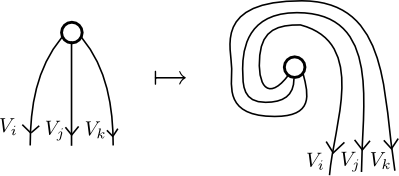A Prehistory of n-Categorical Physics
Posted by John Baez
I’m valiantly struggling to finish this paper:
- John Baez and Aaron Lauda, A prehistory of n-categorical physics (draft version).
Perhaps blogging about it will help…
… or at least help me feel like I’m not procrastinating.
We’re calling it a ‘prehistory’ because the history hasn’t quite started yet. Nobody yet has used explicitly -categorical ideas to formulate a successful theory of physics. Nonetheless, many lines of thought are converging in this direction, so it seems worthwhile explaining what people are doing, even if it never amounts to anything substantial.
Here’s one problem with writing a prehistory when the history hasn’t started yet: it’s hard to know where to stop.
Right now the subject of -categories is really exploding. But I don’t want to talk about the cool papers that came out last week… so I’m arbitrarily drawing a cutoff at the year 2000, and I’ll only talk about work after that it completes a story that was well underway before this date. For example, the cobordism hypothesis was formulated before 2000, but it’s impossible to discuss this hypothesis without at least mentioning Lurie’s recent work on it… so I’ll do that. But I need to be ruthlessly selective in my choice of topics. Someday I may a book on this stuff, but this is not that book.
So: I’m trying to hint that if you suggest topics for me to write about, you shouldn’t feel bad if I say “no” or don’t even reply at all. I’m trying to finish this paper by June 1st, so I even need to say “no” to most of my own great ideas about what to add to it.
But, I thought I might post a few comments here about the subjects I’m trying to tackle — just to build up the psychic energy needed to write the paper. And maybe you can cheer me on, and cheer me up, and post corrections, and chat about the ideas, and suggest enormous extra subjects to write about that I won’t have time for.
Right now I’m on the entry Segal (1988). I have to explain the idea of conformal field theory in very simple terms: especially how it arose from string theory, how it led to Atiyah’s axioms for a topological quantum field theory, and how it connects to higher categories. I suddenly realized that I need to set the stage with an entry String Theory (1980s).
So, let me try that…


Re: A Prehistory of n-Categorical Physics
Nice paper. I am happy to cheer you on. Being pretty ignorant of the subject, I will not suggest any topics…